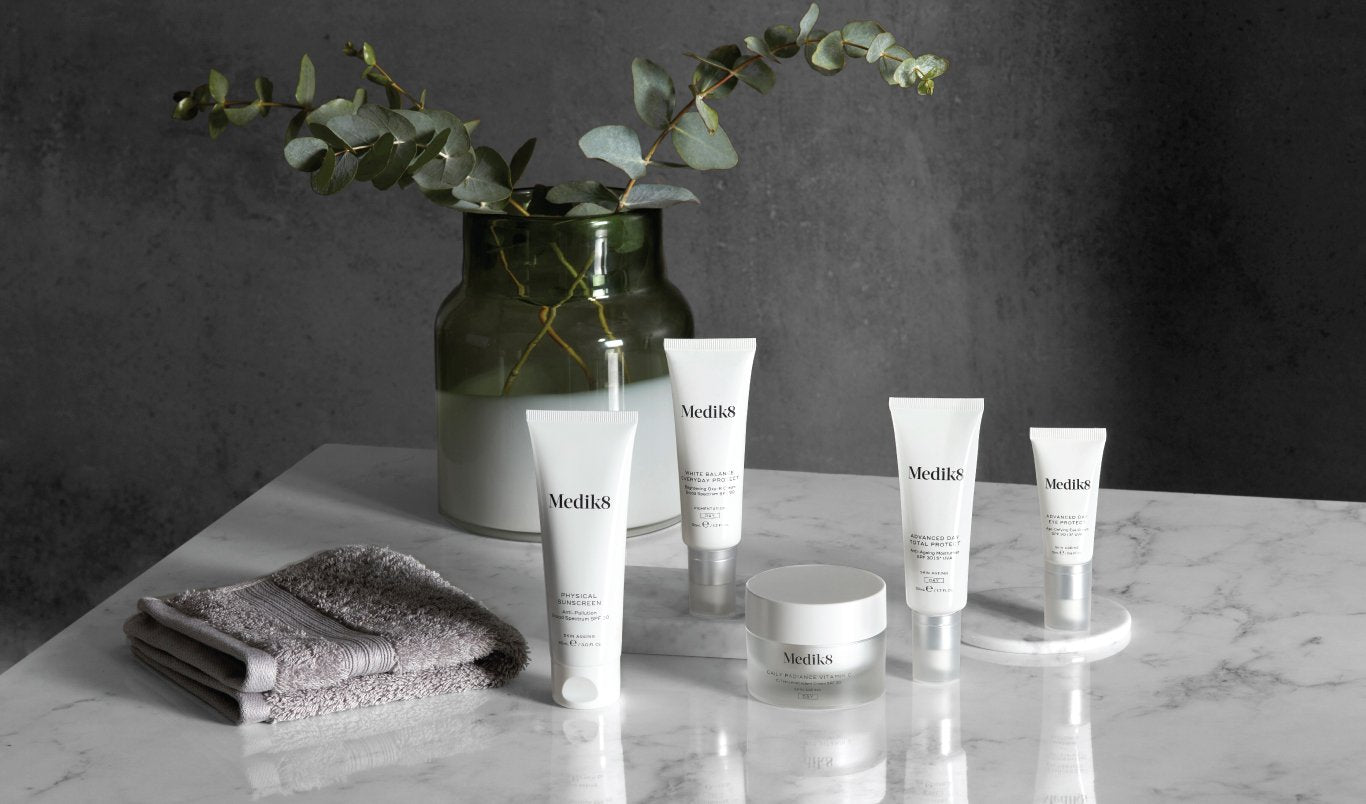Sunscreens are your very best tool for preventing premature skin ageing. Did you know that 80% of premature skin ageing is actually caused by UV ray damage,[1] a terrifying statistic which will have you slathering on the SPF in seconds. Exceptionally effective in minimising the risk of skin cancer, sunscreen should be an everyday product on your bathroom shelf.
There are two distinct types of sunscreens used in skincare - physical (also known as inorganic) and chemical (also known as organic). Both types of filters absorb UV rays, converting them into heat energy. Physical sunscreens can also reflect and scatter a percentage of UV rays away like a mirror. Physical sunscreens use filters such as the metal oxides; titanium dioxide and zinc oxide. Chemical sunscreens can use a variety of filters based on organic molecules.
The problem with chemical UV filters is that they are often shrouded in a cloud of confusion and misconceptions about their safety. There are a variety of well known chemical filters which are traditionally used within skincare (such as oxybenzone and octocrylene) which often have a negative perception, due to concerns about their ‘safety’ and impact on the coral reefs. To add fire to the flame, a clinical study has been published investigating whether these chemical sunscreen filters can penetrate into the bloodstream.
The study was published in the medical journal JAMA, looking at the whereabouts of four common sunscreen filters (avobenzone, oxybenzone, octocrylene and ecamsule).[2] Focusing on a small panel of 24 participants applying 2 mg/cm2 of sunscreen over 75% of their body 4 times a day for 4 days, the study looked at blood plasma samples to assess if the sunscreen molecules had entered the bloodstream. Low levels of chemical sunscreen filters were shown to be absorbed through the skin into the bloodstream.
On the surface these results sound worrying. But we urge you to read past the headlines and look at the facts of the study.
This study’s results are based on maximal use conditions. First of all, how often do you actually apply the maximum amount of sunscreen to 75% of your body, 4 times a day for any significant period of time? We know that on holiday this might be the case, but on a rainy Sunday in England, it’s not going to be a huge issue. The results of the study do not necessarily reflect real-life sunscreen usage.
Also, bear in mind that there was no indication of negative effects. The presence of sunscreens in the blood after maximal use were not linked to safety concerns. The study merely highlights the need for larger scale clinical studies to determine the optimal dosage of sun creams for the perfect level of protection.
In reality, the benefits of wearing sunscreen 100% outweighs any uncertainty with their safety. In fact, the study even concludes;
‘These results do not indicate that individuals should refrain from the use of sunscreen.’
The small-scale clinical study results should not deter you from using proper sun protection, every single day.
The good news? We select our chemical UV filters from a best in class selection of modern, advanced filters which are known for their high performance on the skin, photostability and skin-friendly benefits; Tinosorb S, Uvinul T150 and Uvinul A Plus. Each filter protects from a different part of the UV spectrum: Uvinul T 150 is a UVB absorber, Tinosorb S is a UVA & UVB absorber and Uvinul A Plus is a UVA absorber. Hence we use a super-trio of advanced filters to cover the whole spectrum, and achieve exceptionally high SPF and UVA protection.
Modern UV filters, such as the ones we use at Medik8, are typically larger molecules than traditional UV filters. They are unlikely to penetrate far into the skin, and thus are usually seen as less irritating. While they are large in size, the modern filters are non-whitening on the skin and will not block pores. For example, Advanced Day Ultimate Protect has been proven to be suitable for all skin types, even sensitive, and leaves an invisible finish on all skin tones*.
The take-away; wear your sunscreen every day, even when it’s cloudy.
[1] F. Flament et al., Effect of the sun on visible clinical signs of aging in Caucasian skin, Clinical, Cosmetic and Investigational Dermatology, 2013, 6, pp 221-232
[2] M. Matta et al, Effect of Sunscreen Application Under Maximal Use Conditions on Plasma Concentration of Sunscreen Active Ingredients, JAMA, 2019
← Older Post Newer Post →
